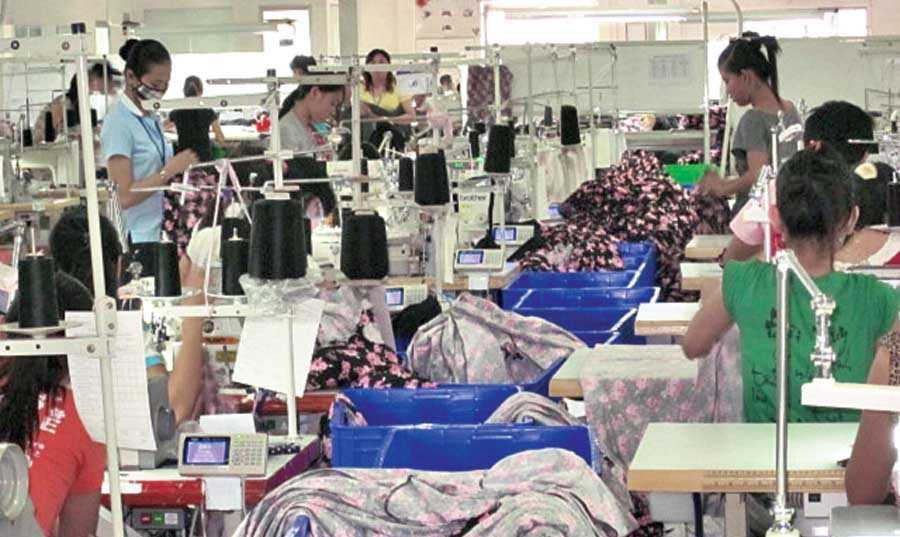
The industry is slowly replacing barcodes with RFID with the advantage that data is available at the point of transaction, however the technology is still quite expensive but in the long run it will become more and more important to use RFID since the timely availability of transparent information will play a major role in satisfying customers, view K. Shri Raajkhaanth, a Senior Consultant of the Apparel Industry and Roger Thomas, Managing Director, Methods Workshop Apparel Consultancy India.
RFID stands for Radio Frequency Identification and falls under the category of Automatic Identification and Mobility (AIM) technology, used for the purpose of identifying, tracking, recording, storing and communicating live management and operating information. Three major components of the System are RFID tags (every bundle will be attached with one), RFID Reader (every workstation will have one of these) and the software that makes it all work together, this will vary according to the number of features you require.
Use of RFID System
As running the factory becomes more and more complicated, customers are asking for assorted colours and sizes to be packed in the same carton and production managers/executives have to run around to maintain production levels of different sizes and colours to ensure that orders can be dispatched on time. This requires a lot of people in counting/searching of garments during shipping; however if the whereabouts of the garments is shown online, then this will be a great help to manage the shipment, ensuring that multiple colour and size packs are able to be constantly prepared.
“Where are the M-size garments that were put on the line more than a week back?”
“What is the balance in Red to close the shipment?”
“How many garments were sent for washing? And how many have come back?”
“Is the embroidery schedule running according to plan?”
“What has happened with the efficiency over the past month?”
“How much time has been lost waiting for the mechanics to repair machines?”
These are the common questions raised in garment manufacturing factories and the management has to search for the relevant information to make decisions on how to deal with the ongoing problems, partially due to the unavailability of immediate and reliable information. RFID can do all this instantly! Although the current systems of manual tracking or a barcode based bundle ticket systems serves the purpose, RFID gives instant and constantly updated information without having to look for it.
RFID advantages
When production lines are running, constant balancing is essential to maximize output and with RFID, WIP information is live and all variations to the planned WIP are immediately available so supervision can see the in-balances and bottlenecks and work to rectify them as quickly as possible.
The RFID terminal has the following information constantly available at the touch of a button: Efficiency, Off-standard, Current quality level, Bonus earnings, Garments done so far today, Bundle information, Repairs done, Time the workstation started, Operator name, Monthly output and Current order that is running.
All relevant information can be displayed on large screens distributed around the factory and in the offices of those who are responsible. It is instantly and constantly updated, so management can see how orders are running against target, if at the current production rate they will be early or late, corrective action can be implemented as early as possible. The results can further be integrated with smart phones and gives the flexibility of “Data on the move”.
HR system, payroll, incentives
One of the greatest needs of the hour is to motivate the operators to produce more; it’s obvious that the most effective motivator is money and RFID is a magnificent tool to show operators how much they are earning throughout the day, each time a bundle is completed the earnings are automatically updated on the operators terminal, thus they can see their earning up to the minute, this is one of the best possible motivators since it is ever present and updated immediately. The system can be incorporated with HR admin and payroll software. Payroll processing becomes online, resultantly it is much easier to handle.
Quality
It is also possible to monitor quality through the system, roving quality checkers can regularly visit operators and check the garments and record faults on the terminal, the same process of recording can be done by inline and end line checkers, the information will establish a fault rate per operator/section and factory. Appropriate preventative action can be taken quickly. This of course leads to a “Right first time psychology” which will help lower re-work percentage as a further step towards improved productivity and lowering costs.
Time Management
Operators also record all lost time on their terminals (this is later authorized by supervision) thus an accurate system of recording is established and can be constantly managed. It is also possible to call a mechanic through this process. Apart from the operational advantages, RFID tags are also recyclable, thus low running cost.

Post a Comment